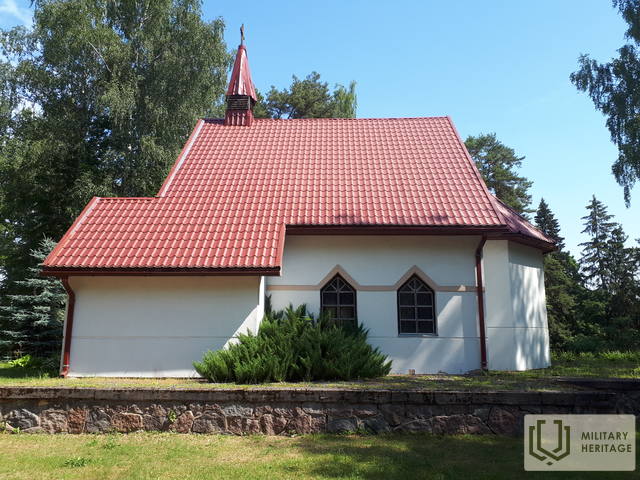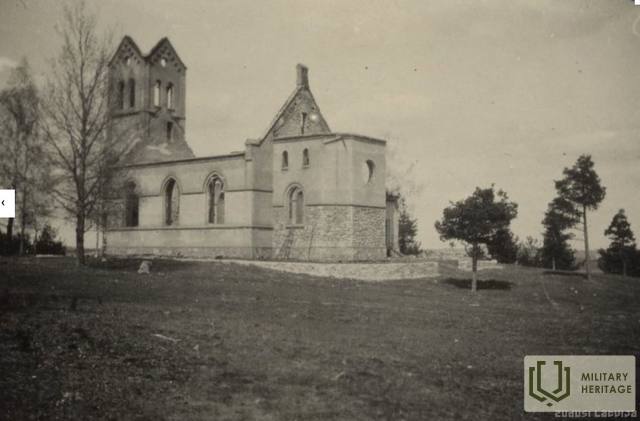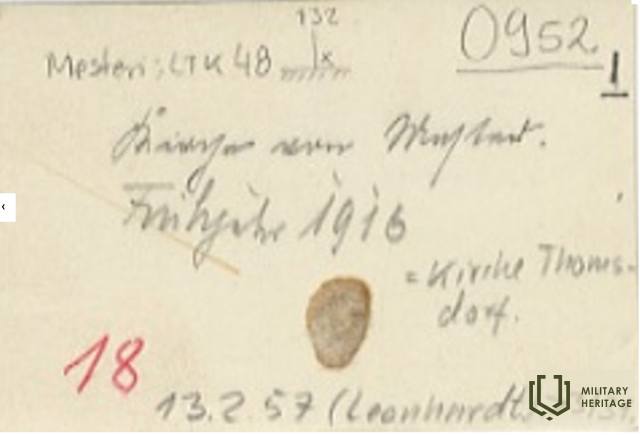Tomo evangelikų liuteronų bažnyčia Mūšio vieta

Pirmoji žinoma bažnyčia Tomėje pastatyta 1644 m. 1907–1908 m. vietoj medinio pastato barono Šilingo lėšomis buvo pastatyta mūrinė bažnyčia. 1956 m. bažnyčia buvo nugriauta, o iš jos akmenų pastatytas kolūkio vištidinis ūkis. Šiandien matoma bažnyčia, esanti tarp buvusios Tomės pradinės mokyklos (mokykla buvo uždaryta po mokyklų reformos, ten buvo įkurtas Kegumo regioninis muziejus) ir Tomės kapinių, buvo pastatyta 1999–2003 m. Briežių šeimos (JAV) iniciatyva. Dabartinį altorių nutapė Sandijs Greiškāns iš Kegumo, remdamasis Atos Grundės 1932 m. daryta altoriaus nuotrauka. Vargonus bažnyčiai padovanojo liuteronų parapija iš Švedijos.
Latvijos nacionalinės bibliotekos (LNB) kolekcijoje „Dingusi Latvija“ yra Tomės bažnyčios nuotrauka, kurioje matyti jos sunaikinimas 1916 m. Pirmojo pasaulinio karo metais. Tų pačių metų mūšiuose nukentėjo ir šalia bažnyčios esanti Tomės pradinė mokykla.
1938 m. „Latvijas Kareivī“ numeryje yra straipsnis „Pa ddimtās zemes istēlstam un ciemiem“, kuriame minima Tomės bažnyčia: … „Be to, kelias veda pro Tomės bažnyčią, kurią 1916 m. sugriovė rusai, manydami, kad tai vokiečių stebėjimo postas. Maža parapijiečių bendruomenė – apie 250 narių – 1922 m. su didele energija ėmėsi bažnyčios renovacijos ir per 10 metų pastatė naują bokštą ir altorių su menininko Grunde altoriumi. Dabar bažnyčia su baltomis sienomis, rudais langų ir durų rėmais bei tvarkingu interjeru palieka malonų įspūdį“.
Panaudoti šaltiniai ir literatūra:
1. Kegumo apygarda, www.kegumcounty.com
2. LNB „Prarasta Latvija“, www.lostLatvia.lv
3. LNB „Periodinis leidinys“, „Latvijos karys“, 1938 m. liepos 5 d., numeris
4. http://tomes-lutheran-church.homeland.com/
Susijusi istorija
Gyvenimas Kegumo pusėje Antrojo pasaulinio karo metu
Blykstelėjo prisiminimai apie dabar jau tolimus karališkuosius laikus. Vyresnei kartai tai primindavo jų pačių patirtį, o jaunesniajai kartai tai galėjo būti nuobodu.













